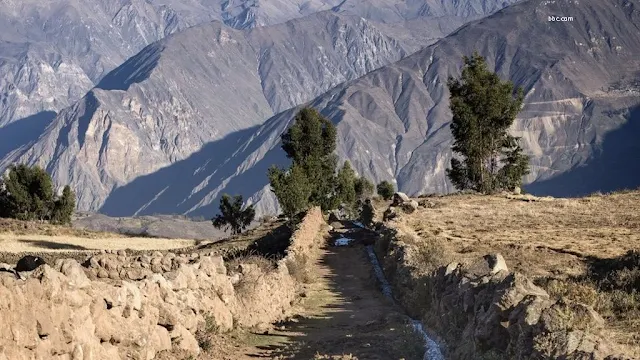Archaeologists have uncovered remnants of an ancient stone road that once connected Peru's Atlantic coast to the Inca capital of Cusco, according to research by Brien Foerster. This incredible engineering feat, hidden for centuries in the Andean foothills, reveals how the Inca Empire maintained control over its vast territories.
The road segment, discovered near Chincha Valley, features precisely cut stones and sophisticated drainage systems characteristic of Inca infrastructure. Stretching potentially 600+ kilometers, this route may have been used to transport gold, seafood, and imperial messages across the empire.
Engineering Marvel of the Ancient World
The newly examined section shows the Inca's signature construction techniques:
Polygonal stonework fitting perfectly without mortar
Retaining walls preventing mountain erosion
Stone staircases adapting to steep terrain
Drainage channels surviving 500+ years of weather
"This wasn't just a path—it was a superhighway of its time," explains lead archaeologist Dr. Maria Soto. "The Incas built roads that could last centuries, and this coastal connection was vital for moving goods and troops."
Historical records suggest the road network included:
Waystations (tambos) every 20km for rest
Messenger runners (chasquis) covering 240km/day
Suspension bridges crossing ravines
Why This Discovery Matters Today
Cultural Heritage
Provides new insights into Inca trade routes
Reveals how coastal resources reached the highlands
Engineering Lessons
Ancient techniques outperform modern roads in durability
Sustainable design adapted to environment
Tourism Potential
Could become new hiking trail following historic route
Connects existing sites like Machu Picchu and Nazca
Local guide Jorge Quispe notes: "We've known fragments existed, but seeing how they connected the ocean to Cusco changes our understanding of Inca geography."
In conclusion, this rediscovered road segment offers a tangible connection to the Inca's organizational genius. As archaeologists continue mapping its full extent, each stone reveals new secrets about how an empire without wheeled vehicles or written language managed 25,000-mile network spanning six modern countries.
For modern travelers and historians alike, these ancient pathways remain a testament to human ingenuity—inviting us to walk where imperial messengers once ran with urgent news for the Sapa Inca.
Frequently Asked Questions:
Q: How old is this Inca road?
Built in the 15th century during the empire's peak.
2. Can you hike the full route today?
No—while sections remain intact, much has been lost to time or modern development.
3. What was transported on this road?
Fish, gold, textiles, quipu messages, and imperial administrators.
4. How did the Incas build without mortar?
Using precise stone-cutting techniques that created earthquake-resistant structures.
5. Where's the best place to see Inca roads today?
The Qhapaq Ñan near Cusco offers well-preserved segments open to visitors.






0 Comments